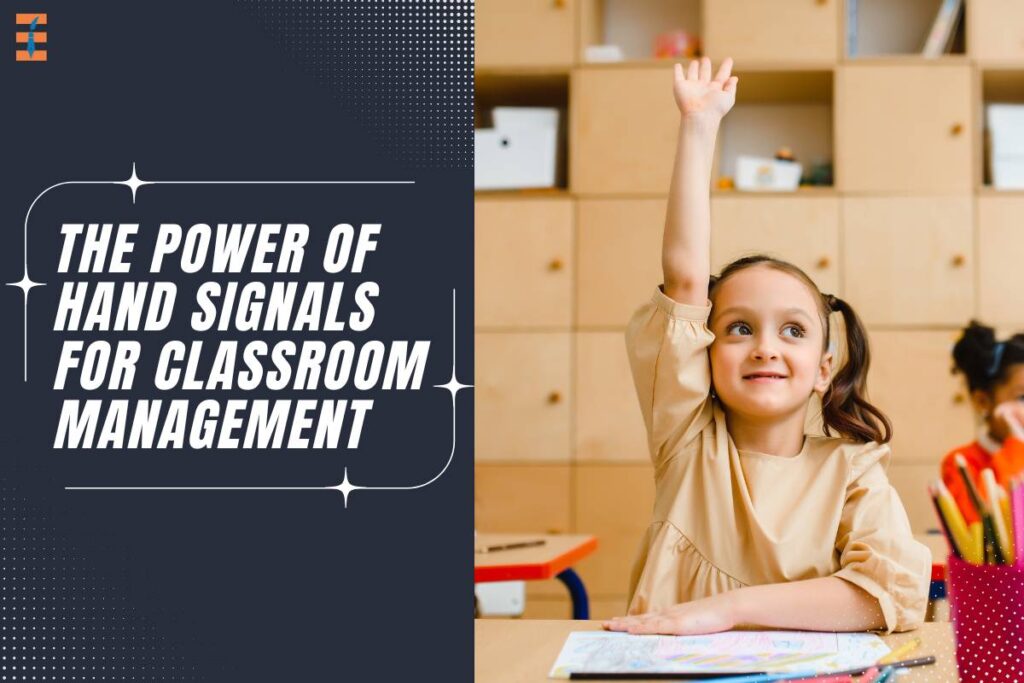In the bustling environment of a classroom, effective communication is key to maintaining order, fostering engagement, and maximizing learning outcomes. While verbal cues and written instructions are commonly used, integrating hand signals into classroom management strategies can significantly enhance communication efficiency and student participation. In this comprehensive guide, we delve into the benefits of utilizing hand signals for classroom management and explore practical ways to implement them effectively.
Understanding the Importance of Hand Signals for Classroom Management
Hand signals for classroom management serve as non-verbal cues that allow teachers and students to convey messages quickly and discreetly. By using hand signals, educators can minimize disruptions, address individual needs, and promote a positive and inclusive learning environment. Furthermore, hand signals provide visual reinforcement of verbal instructions, making it easier for students to understand and follow directions.
Practical Applications of Hand Signals for Classroom Management
1. Attention Signal
Raise your hand signals for the classroom high in the air with your fingers extended. This signal indicates to students that they should stop talking and redirect their focus to the teacher.
2. Restroom Request
Encourage students to raise their hands with two fingers crossed to indicate the need for a restroom break. This discreet signal allows students to address personal needs without disrupting the flow of the lesson.
3. Question Signal

Invite students to raise one hand with a finger extended to indicate that they have a question or require clarification. This signal encourages active participation and ensures that all students have an opportunity to engage in class discussions.
4. Silent Response
Teach students to give a thumbs-up or thumbs-down gesture to indicate their understanding of a concept or their agreement with a statement. This non-verbal feedback allows teachers to gauge student comprehension quickly.
5. Bathroom Emergency
Establish a hand signal, such as holding up three fingers, to signal an urgent need to use the restroom. This signal helps teachers distinguish between routine restroom requests and emergencies, allowing them to respond appropriately.
Implementing Hand Signals for Classroom Management

To effectively implement hand signals in the classroom, consistency and clarity are key. Begin by introducing the hand signals to students and explaining their meanings and appropriate usage. Encourage students to practice using the hand signals during class activities and reinforce their use consistently. Additionally, model the use of hand signals yourself to demonstrate their importance and effectiveness.
Benefits of Hand Signals for Classroom Management
1. Promotes Active Listening
Hand signals encourage students to pay attention and actively participate in classroom discussions by providing a visual cue for when it’s appropriate to speak or ask questions.
2. Minimizes Disruptions
By using hand signals, teachers can address individual student needs discreetly without interrupting the flow of the lesson or disturbing other students.
3. Fosters Independence
Hand signals empower students to communicate their needs independently, promoting self-regulation and responsibility for their learning environment.
4. Increases Engagement
Incorporating hand signals into classroom management strategies can enhance student engagement by providing alternative means of communication and participation.
5. Supports Inclusive Learning

Hand signals provide a universal means of communication that is accessible to all students, including those who may have difficulty expressing themselves verbally.
Frequently Asked Questions (FAQs)
1. How do hand signals for the classroom benefit classroom management?
Ans: Hand signals facilitate communication between teachers and students, minimize disruptions, promote active participation, and foster a positive learning environment.
2. Are hand signals suitable for all grade levels?
Ans: Yes, hand signals can be adapted to suit the needs and abilities of students at any grade level, from elementary school to high school.
3. How can teachers ensure that students understand the meaning of hand signals?
Ans: Teachers can introduce hand signals gradually, explain their meanings clearly, provide practice opportunities, and reinforce their use consistently.
4. What if a student forgets the meaning of a hand signal?
Ans: Teachers can provide gentle reminders or display visual cues in the classroom to reinforce the meanings of hand signals and help students remember their significance.
5. Can hand signals be customized to accommodate specific classroom needs?
Ans: Teachers can modify hand signals or introduce additional signals to address specific classroom routines, procedures, or student needs effectively.
Conclusion
In conclusion, hand signals for classroom management are a valuable tool for enhancing communication, promoting student engagement, and creating a conducive learning environment. By incorporating hand signals into their teaching practices, educators can empower students to communicate effectively, foster a sense of independence, and maximize learning opportunities. With proper implementation and reinforcement, hand signals can revolutionize classroom dynamics and contribute to a more efficient and inclusive educational experience.
Also Read: Simplifying Classroom Management for New Teachers










